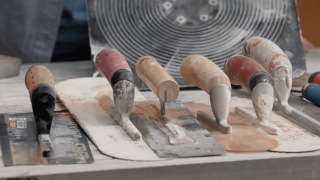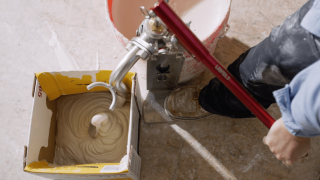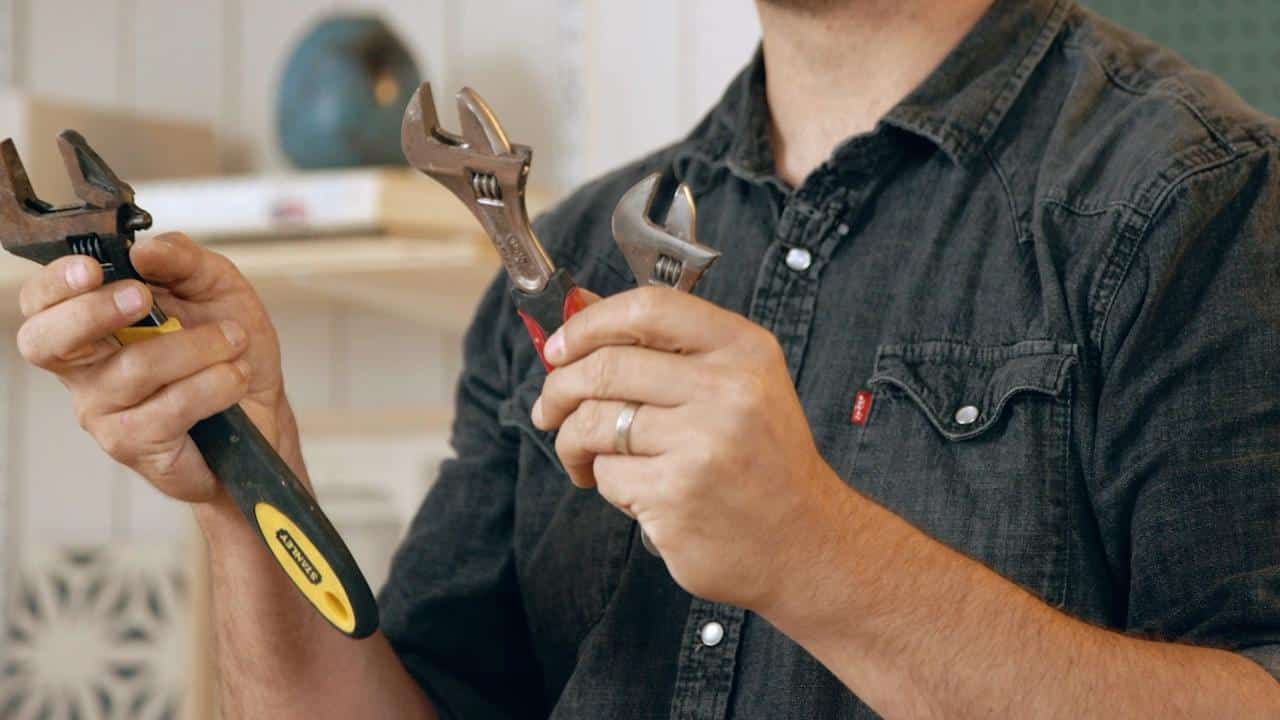
Wrench sets aren’t a tool bag necessity if you’re primarily working with wood, but every builder should have a few multipurpose wrenches on hand to drive lag screws, level equipment, and make adjustments to fixtures and appliances. Professional builder and craftsman Jordan Smith recommends keeping a few adjustable wrenches on hand along with any specialty wrenches you need for your trade.
“As far as wrenches go in construction, you’re mostly working with wood and you’re not doing a whole lot of metal and bolts, but you do want a few good wrenches in your tool bag.” – Jordan Smith
What is a wrench?
The job of a standard wrench is to tighten or loosen nuts and bolts to fasten a joint. The head of the wrench fits over the nut providing leverage to tighten or loosen it.
When you think of the classic home improvement wrench, you’re most likely picturing a crescent wrench. It’s a one-sided wrench with a curved head with an opening to slide around the nut. In general, the longer the handle, the greater the leverage, and the more snug the wrench head is on the nut, the better the grip you’ll have—especially useful for loosening difficult nuts.
Common Wrench Types for Construction
There are dozens of different types of wrenches but if you’re a general contractor like Jordan, you will most likely only need a handful of versatile adjustable wrenches. Even if you work in carpentry (where you’re not likely to reach for a wrench very often), it’s good to have a working knowledge of the most common types of wrenches in construction.
Adjustable crescent
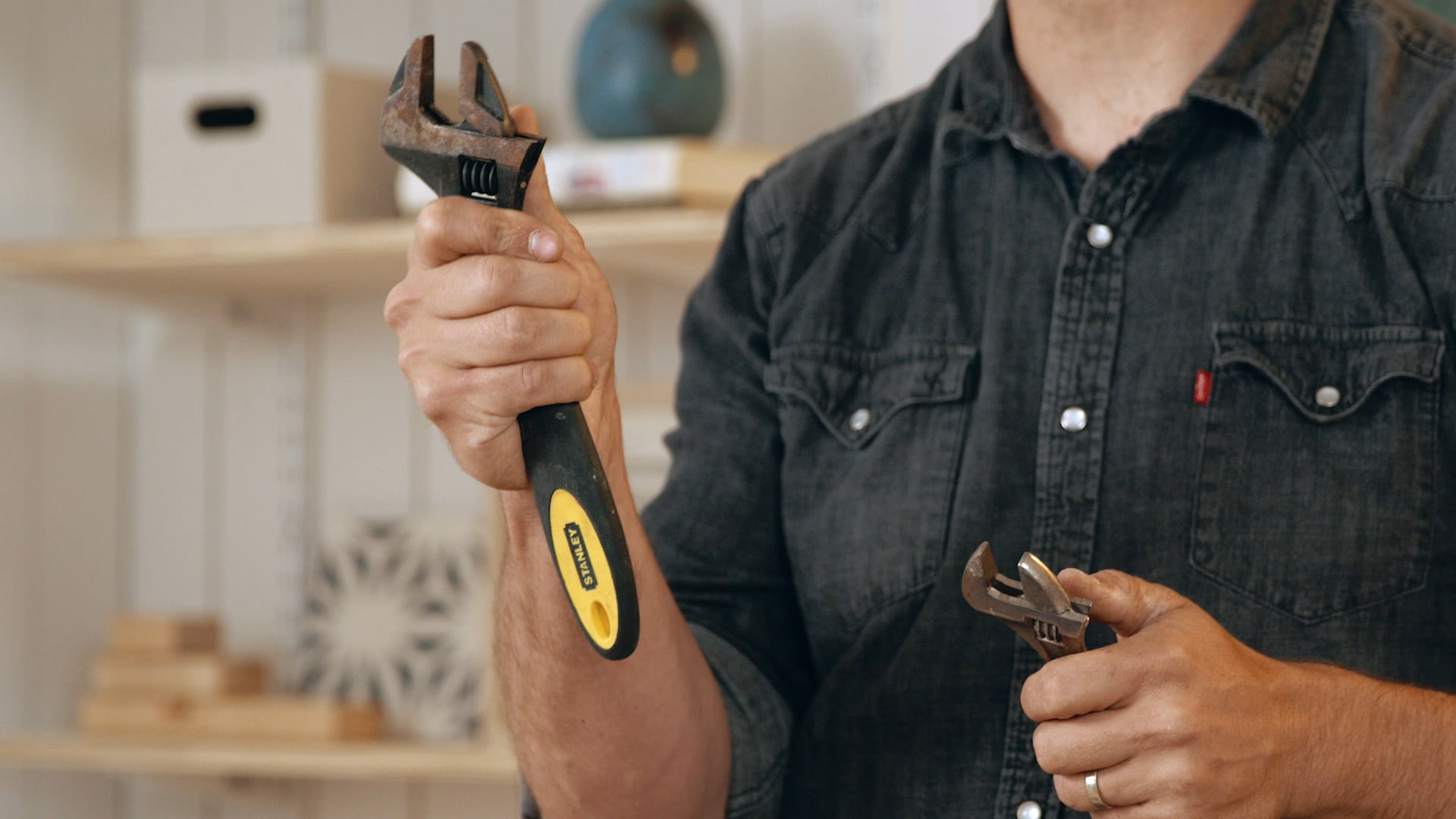
“Quickly and lightly, I can do 90% of the work that I need to with these adjustable wrenches.” – Jordan Smith
Crescent wrenches are named for their u-shaped end. Adjustable crescent wrenches are very versatile. Because you can adjust the width of the wrench, you don’t need to know the exact size of the nut ahead of time—perfect for fixes in a pinch.
You can use one crescent wrench for multiple sizes of bolts which means you also don’t need to carry around a full set of wrenches in your toolbag. An adjustable crescent offers slightly less grip over the nut than a fixed wrench, but an easy-adjust wrench is still an essential tool for any builder’s toolkit.
Open ended
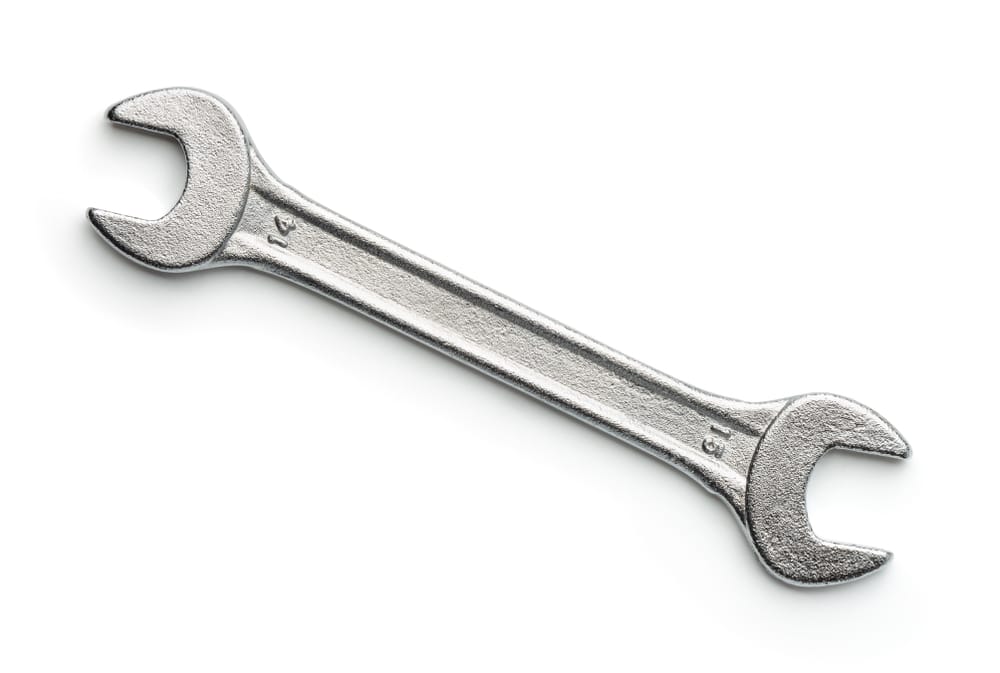
Open ended wrenches are the most common wrench in home toolboxes and have the same crescent shape as adjustable crescent wrenches but come in fixed sizes. Many open ended wrenches are double sided with a different size of wrench on each end.
Because the size of the wrench head is exact to the nut, you’ll need to use the right size wrench to fit around the nut—meaning you’ll have to carry a full set of wrenches. But you will also get a tighter grip on the nut. They are also slimmer than box end wrenches, making it easier to get into tight spaces.
Box ended
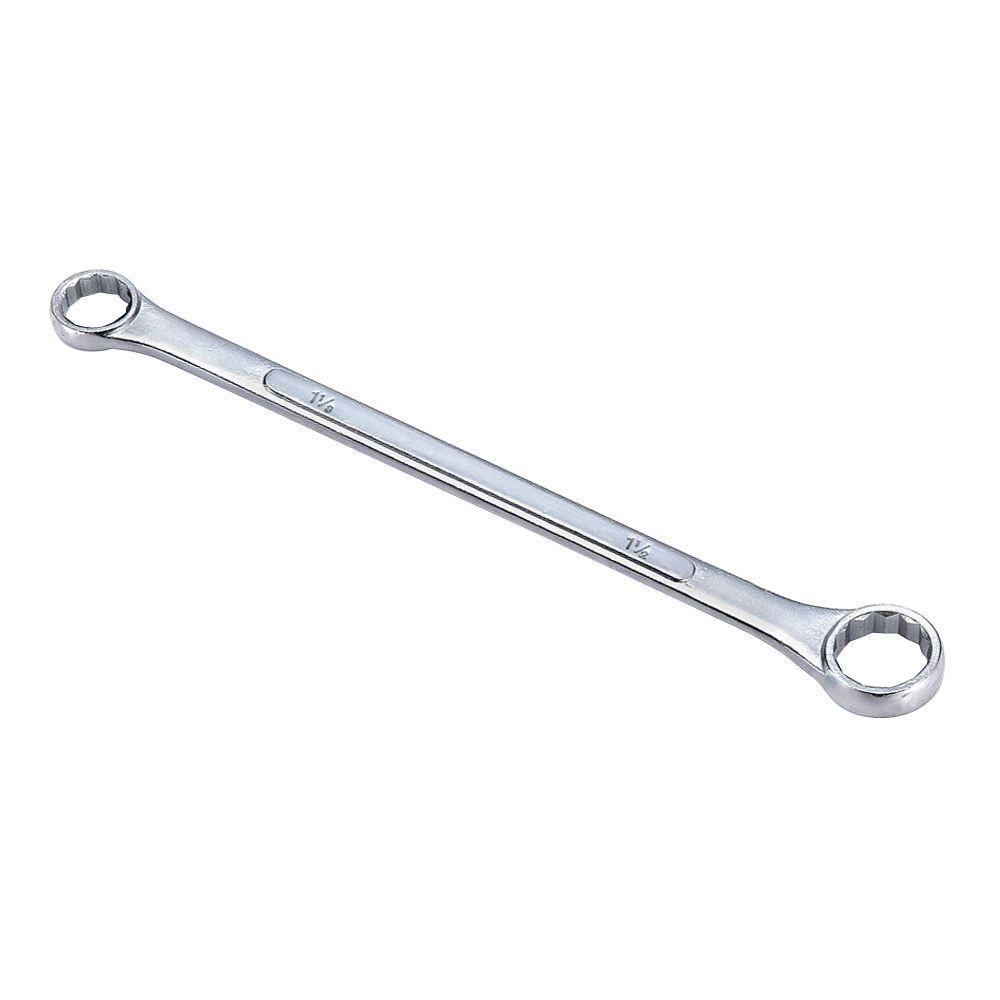
A box end wrench is another type of fixed wrench (like open ended wrenches) but with a box shape or closed circle shape instead of a crescent with an opening. The benefit of a box ended wrench is that because they fit completely over the nut you can get more powerful leverage, but they are harder to use in tight spaces where you don’t have enough clearance to slide the wrench over the nut.
Also, like open ended wrenches, you need to carry a full set since the size of each wrench head is not adjustable.
Combination
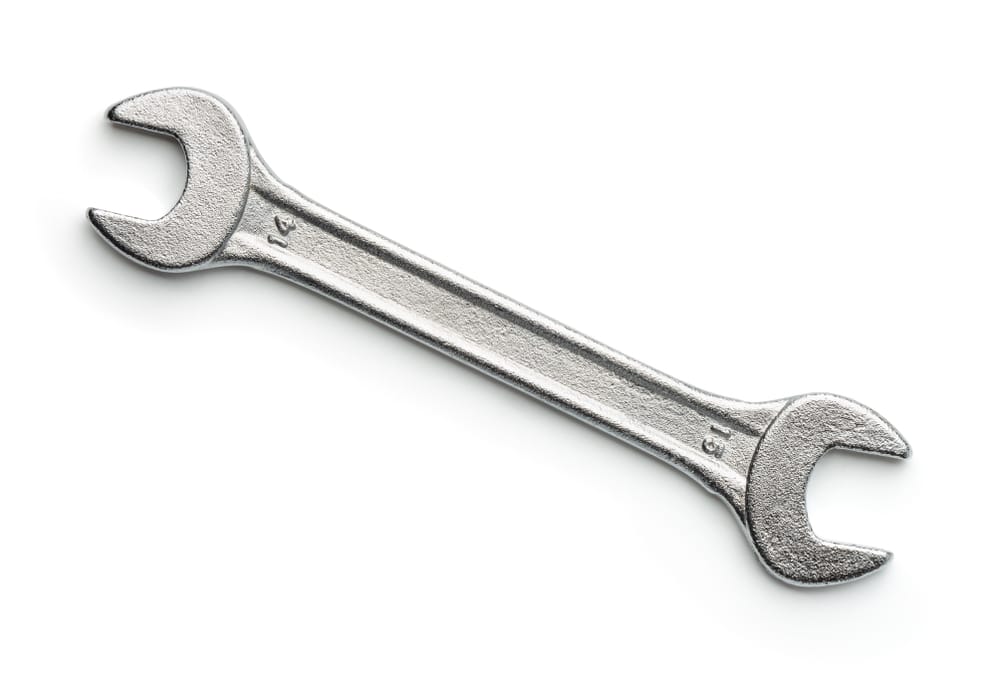
A combination wrench is exactly what it sounds like—a combination of an open end wrench and a box end wrench. This gives you the versatility of an open end wrench that can fit into tighter spaces and the extra power of a box end wrench. You can use the closed end to loosen a difficult nut and then the open end to remove the nut more quickly.
Wrench sets aren’t a tool bag necessity if you’re primarily working with wood, but every builder should have a few multipurpose wrenches on hand to drive lag screws, level equipment, and make adjustments to fixtures and appliances. Professional builder and craftsman Jordan Smith recommends keeping a few adjustable wrenches on hand along with any specialty wrenches you need for your trade.
“As far as wrenches go in construction, you’re mostly working with wood and you’re not doing a whole lot of metal and bolts, but you do want a few good wrenches in your tool bag.” – Jordan Smith
What is a wrench?
The job of a standard wrench is to tighten or loosen nuts and bolts to fasten a joint. The head of the wrench fits over the nut providing leverage to tighten or loosen it.
When you think of the classic home improvement wrench, you’re most likely picturing a crescent wrench. It’s a one-sided wrench with a curved head with an opening to slide around the nut. In general, the longer the handle, the greater the leverage, and the more snug the wrench head is on the nut, the better the grip you’ll have—especially useful for loosening difficult nuts.
Common Wrench Types for Construction
There are dozens of different types of wrenches but if you’re a general contractor like Jordan, you will most likely only need a handful of versatile adjustable wrenches. Even if you work in carpentry (where you’re not likely to reach for a wrench very often), it’s good to have a working knowledge of the most common types of wrenches in construction.
Adjustable crescent

“Quickly and lightly, I can do 90% of the work that I need to with these adjustable wrenches.” – Jordan Smith
Crescent wrenches are named for their u-shaped end. Adjustable crescent wrenches are very versatile. Because you can adjust the width of the wrench, you don’t need to know the exact size of the nut ahead of time—perfect for fixes in a pinch.
You can use one crescent wrench for multiple sizes of bolts which means you also don’t need to carry around a full set of wrenches in your toolbag. An adjustable crescent offers slightly less grip over the nut than a fixed wrench, but an easy-adjust wrench is still an essential tool for any builder’s toolkit.
Open ended

Open ended wrenches are the most common wrench in home toolboxes and have the same crescent shape as adjustable crescent wrenches but come in fixed sizes. Many open ended wrenches are double sided with a different size of wrench on each end.
Because the size of the wrench head is exact to the nut, you’ll need to use the right size wrench to fit around the nut—meaning you’ll have to carry a full set of wrenches. But you will also get a tighter grip on the nut. They are also slimmer than box end wrenches, making it easier to get into tight spaces.
Box ended

A box end wrench is another type of fixed wrench (like open ended wrenches) but with a box shape or closed circle shape instead of a crescent with an opening. The benefit of a box ended wrench is that because they fit completely over the nut you can get more powerful leverage, but they are harder to use in tight spaces where you don’t have enough clearance to slide the wrench over the nut.
Also, like open ended wrenches, you need to carry a full set since the size of each wrench head is not adjustable.
Combination

A combination wrench is exactly what it sounds like—a combination of an open end wrench and a box end wrench. This gives you the versatility of an open end wrench that can fit into tighter spaces and the extra power of a box end wrench. You can use the closed end to loosen a difficult nut and then the open end to remove the nut more quickly.
Socket or ratchet
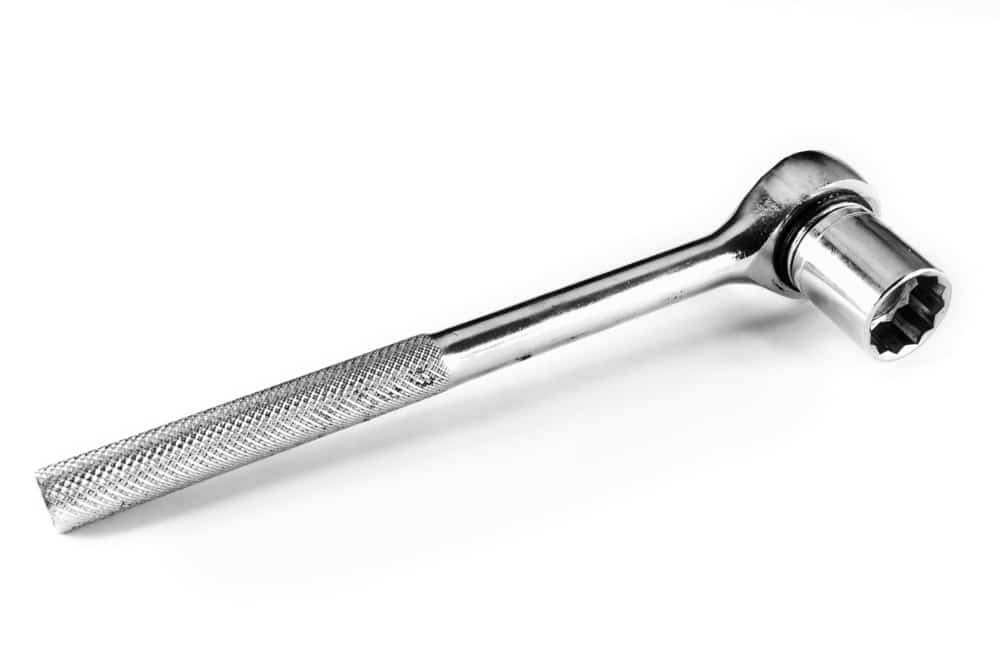
Socket wrenches and ratchet wrenches are often used interchangeably. Technically the ratchet is the mechanism on a wrench that allows you to wind the wrench without moving the socket. Socket wrench sets typically come with one ratchet and a set of sockets of different sizes. The socket fits completely over the nut like a box end wrench but with a deeper socket, then the wrench attaches to the socket. This means you can move the wrench over and over without ever taking it off of the nut. It’s a fast way to remove a nut and handy in tight spaces.
Allen
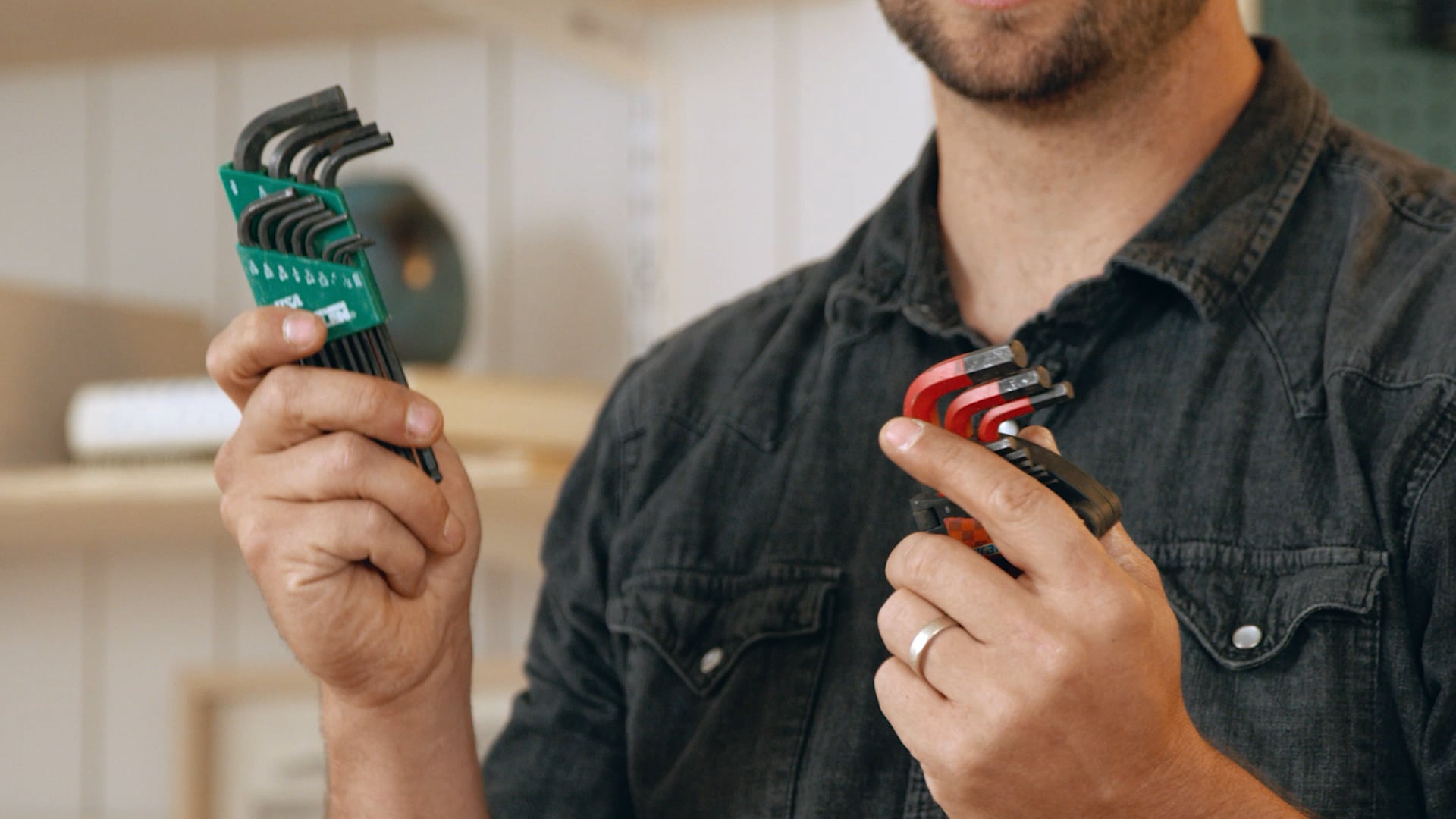
“There’s always something that needs to be worked on with allen wrenches. Usually not directly on what you’re building—you’re never assembling something with an allen headed screw—but you’re always using a piece of equipment that seems to have an allen headed machine screw on it, so these are great to have.” – Jordan Smith
Allen wrenches are perfect for adjusting tools like table saws and chop saws and making small adjustments to fixtures. They are a lightweight addition to any toolbox that don’t take up much space, are inexpensive, and always come in handy.
Pipe wrench
A pipe wrench is exactly what it sounds like—a wrench designed specifically to grip around a pipe. It has slack to allow the pipe to fit in and angled teeth that bite into the pipe so that it will easily latch on and then tighten down quickly. It rotates one way freely then locks onto the pipe when you turn the wrench in the opposite direction. These are handy for getting threaded pipe into a coupler.
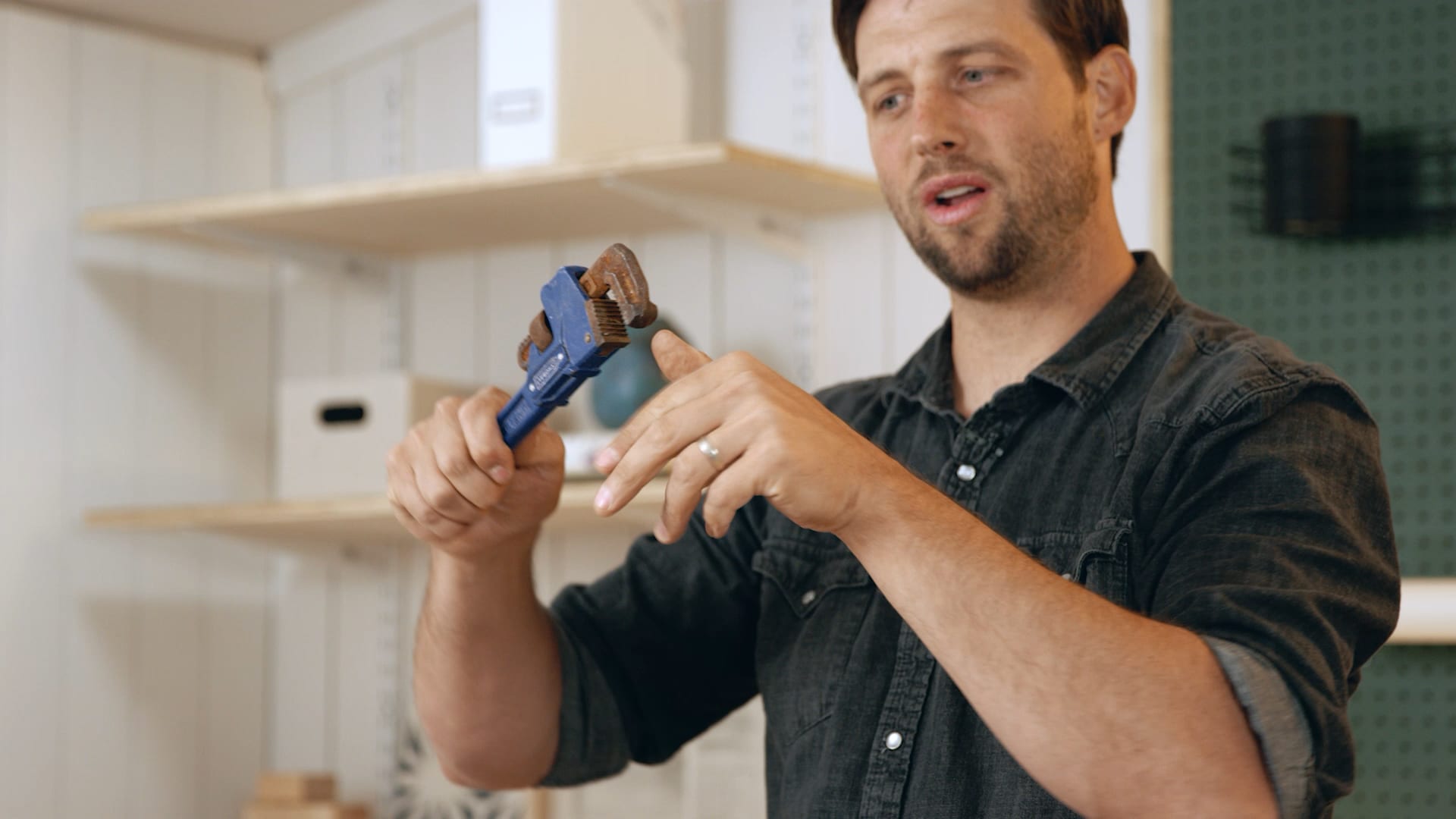
Wrenches are an essential tool you’ll need on a construction site. Learn more about this and other important construction tools—and how to use them safely—in MT Copeland’s Hand Tools online class, taught by professional builder and craftsman Jordan Smith.
Specialty wrenches outside of construction
Outside of construction, there are many other fields that use specialty wrenches, especially in car and bicycle mechanics. For example, if you’ve ever changed a flat tire you have used a lug wrench—a wrench unique to the field of auto mechanics. A lug wrench has a long handle designed to provide the necessary leverage to loosen lug nuts from a car wheel.
At an auto mechanic shop, they use a powered wrench called an impact wrench to make quick work of tightening and loosening fasteners much like a carpenter would use a pneumatic hammer for speedy nailing.
You’ll also see allen wrenches and torque wrenches used commonly in mechanics. Many car and bicycle parts require a specific amount of torque to best function. A torque wrench measures the tension applied to the fastener so that the mechanic can dial in the torque to perfection.
Tips
- While you don’t need much more than a few adjustable wrenches to tackle most tasks, there are times when only a specialty wrench can do the job.
- Jordan recommends keeping a small, medium, and large size adjustable crescent wrenches on hand at the bare minimum.
More Toolbox Recommendations
Get Jordan’s complete class on choosing and using essential construction tools in MT Copeland’s Hand Tools online course.
MT Copeland offers video-based online classes that give you a foundation in construction fundamentals with real-world applications. Classes include professionally produced videos taught by practicing craftspeople, and supplementary downloads like quizzes, blueprints, and other materials to help you master the skills.




